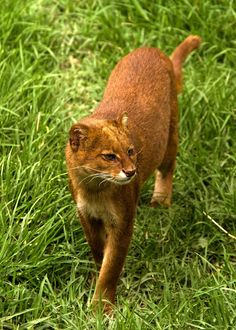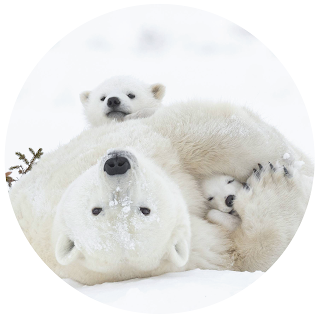The African Wild Dog-by Parker Ornellas
Summary and Ecology-
So what is the African wild dog? This adorable animal is an endangered mammal that typically roams around sub-Saharan Africa. Although its formal name is Lycaon pictus ,the African wild dog has also been given the same “painted dog” or “cape hunting dog” and is extremely disguisable by its molten coat and big round ears.
African wild dogs hunt in packs from anywhere from 6-20 dogs. As these dogs become more endangered they tend to hunt in larger groups. This species is a close-knit community and takes care of their young as well as even assist the injured members of their pack. These generalists, tend to prey on antelope, Thomson’s gazelles, greater kudu, impala, and wildebeest. They also eat birds and rodents to sustain them. As humans continue to infringe on their land, there has been instances of these carnivores eating livestock. These occasions have been rare, but unfortunately farmers fear that these dogs will be a threat to their animals and they end up killing these canines.
For more information about the ecology and general information of African wild dogs refer to these websites
https://www.nationalgeographic.com/animals/mammals/a/african-wild-dog/
http://www.iucnredlist.org/details/12436/0
Geographic and Population Changes-
The current population of African wild dogs is 6,600 adults in 39 subpopulation. These numbers are continuing to decline and it is all due to humans(shocker). They are declining on account of habitat fragmentation, contact with humans and infectious diseases.
Originally these dogs were distributed in sub-Saharan Africa from the deserts to the moutains. However, these poor critters have been completely eradicated in north and west Africa and reduced in central Africa northeast Africa.
Native:
Angola; Benin; Botswana; Burkina Faso; Central African Republic; Chad; Ethiopia; Kenya; Malawi; Mozambique; Namibia; Niger; Senegal; South Africa; South Sudan; Sudan; Tanzania, United Republic of; Zambia; Zimbabwe
Possibly extinct:
Congo, The Democratic Republic of the; Côte d'Ivoire; Guinea-Bissau; Mali; Nigeria; Togo; Uganda
Regionally extinct:
Burundi; Cameroon; Egypt; Eritrea; Gabon; Gambia; Ghana; Mauritania; Rwanda; Sierra Leone; Swaziland

Geographical range of African Wild Dog habitat and how its declined in Africa
 Listing date and type of listing-
Listing date and type of listing-• 2008 – Endangered (EN)
• 2004 – Endangered (EN)
• 1996 – Endangered (EN)
• 1994 – Endangered (E)
• 1990 – Endangered (E)
• 1988 – Vulnerable (V)
• 1986 – Vulnerable (V)
http://www.iucnredlist.org/details/12436/0
Cause of Listing and Main Threats to its Existence-
The African wild dog was originally listed as “vulnreable” in 1986 as there was a huge population decrease due to fragmentation, infectious diseases and conflicts with humans. However, in 1990 these poor pups were finally listed as “endangered” on account of the fact that their numbers were declining so rapidly. African wild dogs populations generally tend to flucuate so it is estimated in some subpopulations, there may be less than 250 mature adult individuals!
The African wild dog continues to lose its habitat to humans. It is also threatened by being shot by humans and can catch infectious diseases from the livestock brought over by humans. These diseases are so detrimental to African wild dogs that it can wipe out a whole sub population.
http://www.awf.org/wildlife-conservation/african-wild-dog


Description of recovery plan- Measures for the conservation and management of free-ranging wild dog population.
Protection of wild dog habitat-
o National parks and reserves
o Other wildlife reserves
Controlling human induced mortality-
o Persecution
o Legal protection and zoning
o Livestock husbandry
o Compensation schemes
o Control of poison
o Problem animals
o Snaring
o Road traffic accidents
Managing the threat of disease-
o Minimizing contact between wild dogs and disease reserves
o Eradicating diseases from their disease host
o Vaccinizing the dogs themselves
o Choosing the best strategy for disease control
What can you do?
You don’t have to be in Africa to help save these adorable dogs. You can take steps towards their conservation without having to go anywhere. Here are some tips to protect this lovable species-
- Adopt a wild animal- You can symbolically adopt an African wild dog online and the money will go to the species conservation.
- Take action- Send messages to your government leaders about wildlife conservation
- Speak up for African wild dogs- Become an advocate for wildlife
- Stay informed- Be aware of important issues facing these dogs

For more information on how to conserve these animals click on this link-
http://www.defenders.org/african-wild-dog/what-you-can-do
Fun facts and exciting things to know about the African wild dogs!
After a hunt, these dogs regurgitate meat for the pups in their litter
These dogs give birth in underground dens, abandoned by warthogs or porcupines
African wild dogs once roamed across most of the continent
African wild dogs make consensus decisions by sneezing!
to watch a video of African wild dogs sneezing to make decisions along with read an article about this peculiar phenomenon click on this link!
https://news.nationalgeographic.com/2017/09/african-wild-dogs-vote-by-sneezing/







It is interesting how a lot of the time, animals are endangered because they infringe on human's resources (farms and livestock), which encourages their deaths. And we know because their status went from vulnerable to endangered within 5 years, the Recovery Plan must be not effective enough to improve their status and save their lives. A lot of things we can do to help endangered species is adopting the animals to send funds to the organizations that help them which is amazing.
ReplyDeleteMaya Mashiach
BIO227
Its strange that they have a sort of unspoken language through sneezing. I love that you included a video!
ReplyDelete~Sage Massey
Super interesting animal. Love the inclusion of the fun facts section- especially the video. Your humor about humans being the primary cause for the endangerment of this animal (shocker) is relatable and good way to reach your reader.
ReplyDelete-Perry Nalle
You had a lot of great information in your blog. The way you organized it really mad it easy to read, process, and follow along with. I think it was a creative tough to add the fun facts section about the African Wild dogs. Also, so cool that they can communicate through sneezing!
ReplyDelete-Mckenna Moura
Stunning photo at beginning of blog post really catches the eye. These dogs are so beautiful. Having never even heard about this species, I learned a lot reading your post. Great inclusion of fun facts and video on sneezing at the end. You did an excellent job bringing this animal to life on the screen.
ReplyDelete-Shannon O'Hehir
It's interesting to see generalist on the endangered species list. To see humanity's impact on these animals is quite sad, but I thought it was very well written! I enjoyed learning about these dogs, because I have never heard of them before.
ReplyDelete-Christine Okimura
Wow these are absolutely adorable!! The picture of the god looking into the camera is precious. I have never heard of these wild dogs so I loved reading this blog. It's sad that there are less than 250 of the african wild dogs left.
ReplyDelete-Fiona McCallion
I like how you included all the different years and the listings of this species, because it helps illustrate how they have been threatened and endangered for a very long time. All of the pictures and videos included helped inform the readers about the species.
ReplyDelete-Kristen Nagamatsu
They are so cute! I have never seen one before! Your bullet points were straight to the point and understandable for the threats and ways to help.
ReplyDelete-Ali Murray
I didn't know much about this species and I am glad to have learned so much through your blog. I especially liked the fun facts at the end
ReplyDelete-Bryn Mulligan